Class IV Restorations
Class IV restorations can be performed according to one of the following three layering techniques depending on the desired translucency. In all the three techniques, a thin layer of Milky White (MW) is used to establish a lingual shell, followed by a suitable Dentin shade for opacity, and an Enamel shade to generate outer color and minimal translucency (3-layer approach). To increase translucency and opalescence further, Trans is used internally at the incisal one-third over the dentin layer and beneath the enamel layer (4-layer approach). For maximum translucency, Milky White can be applied over Trans (5-layer approach).
3-layer Approach
(minimal translucency and dentin mamelon effects at the incisal one-third)
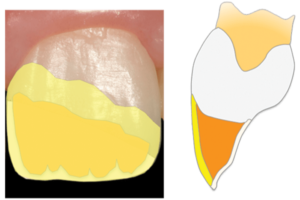
●Milky White
●Dentin
●Enamel
4-layer Approach
(moderate translucency and dentin mamelon effects at the incisal one-third)
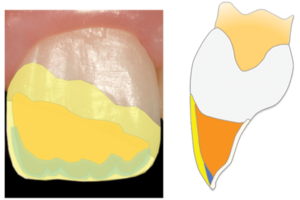
●Milky White
●Dentin
●Trans
●Enamel
5-layer Approach
(maximum translucency and dentin mamelon effects at the incisal one-third)
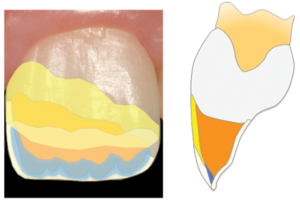
●Milky White
●Dentin
●Trans
●Enamel
●Milky White
Diastema Closure
Diastema closures can be performed according to two techniques. The 2-layer technique is recommended for cases where there is no or little translucency at the proximal of the incisal one-third. This technique uses Milky White (MW) to build a lingual shell, and a suitable Enamel shade as the final outer layer. The 4-layer approach is indicated when some opalescence and translucency are desired at the incisal one-third. To achieve such effect, over the Milky White lingual layer, Trans is used proximally and covered with Milky White.
2-layer Approach
(minimal or no translucency and dentin mamelon effects at the incisal one-third)
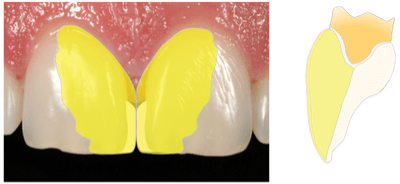
●Milky White
●Enamel
4-layer Approach
(maximum translucency and dentin mamelon effects at the incisal one-third)
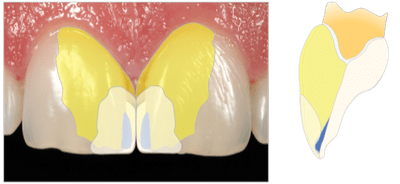
●Milky White
●Trans
●Enamel
●Milky White
Direct Veneer
Direct veneers can be classified in three types according to the need for value change and for incisal edge modification. Type 1 is a basic approach for cases requiring no incisal edge modification, and dentition presenting with a natural base color. Type 1 involves one layer of a suitable Enamel shade and one layer of Milky White (MW). If a higher chroma is desired in specific areas, such as the cervical one-third, ESTELITE COLOR tint (Ochre, Yellow, Red) can be used. Similar to Type 1, Type 2 is indicated for changing mostly the form of a tooth that is not discolored but needs enhanced opacity and incisal edge modification. A Dentin shade is used for opacity, followed by Trans proximally at incisal one-third. An Enamel shade is used on the cervical two-third as the veneer color, while Trans and Milky White are applied proximally at the incisal one-third to create some translucency. Type 3 is recommended for more complex cases requiring masking tooth discoloration in addition to incisal edge modification. ESTELITE COLOR tint (Low, Medium and High Chroma Opaquer) is applied to block out the unwanted tooth color and elevate the value to a more luminous level. The remaining layers are added similarly to those of Type 2. To add white characterizations/ calcification effects, Bleach shades (BL1 and BL2) can be used.
Veneer Type 1
(no incisal edge in value,
no value change)

●Estelite Color Tint (optional)
●Enamel
●Milky White
Veneer Type 2
(incisal edge modification,
no change in value)

●Dentin
●Estelite Color Tint (optional)
●Trans
●Enamel
●Milky White
Veneer Type 3
(incisal edge modification,
change in value)
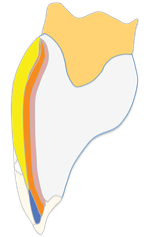
●Milky White
●Enamel
●Estelite Color Tint (optional)
●Trans
●Dentin
●Estelite Color Opaquer
●Bleach (optional)
